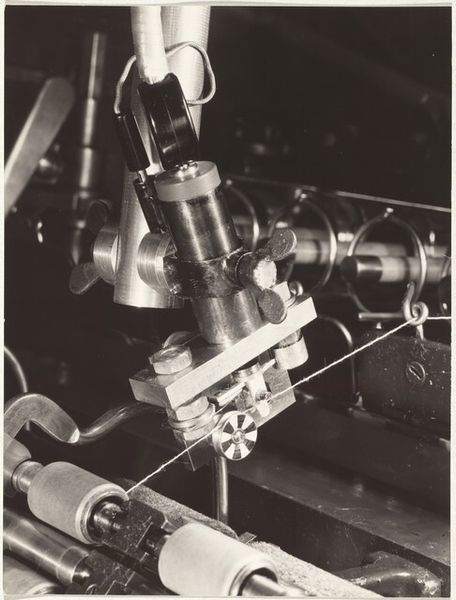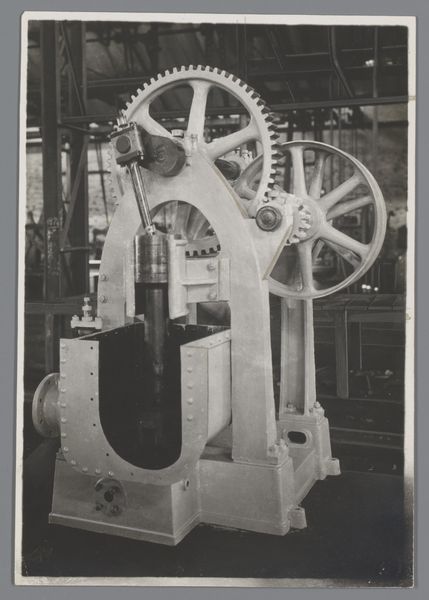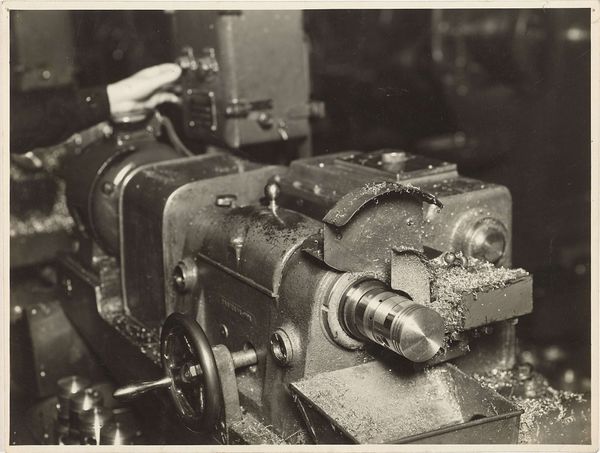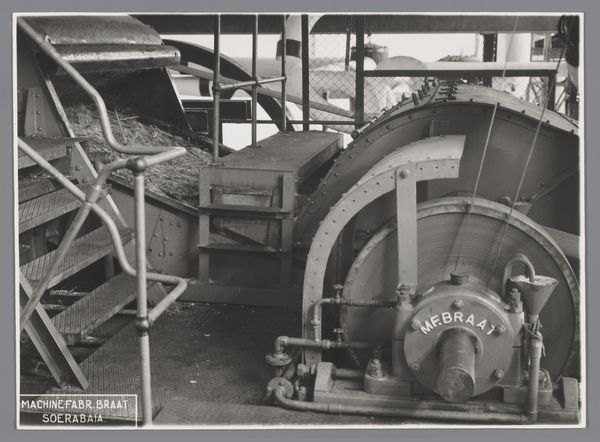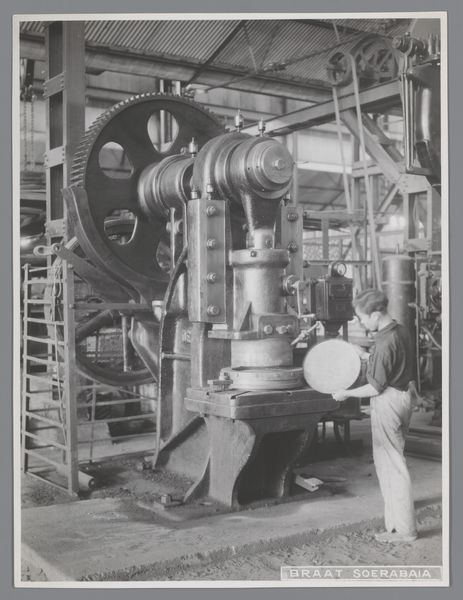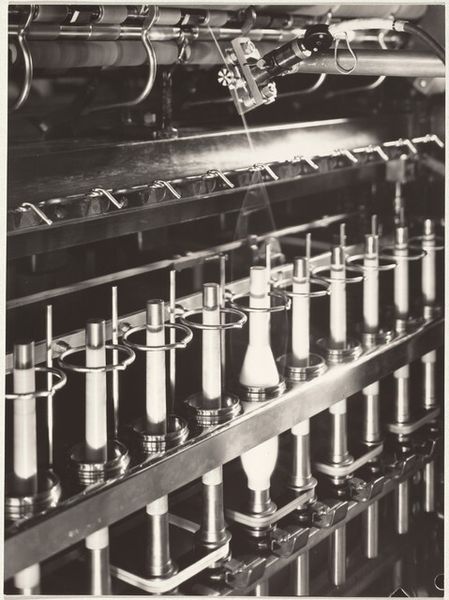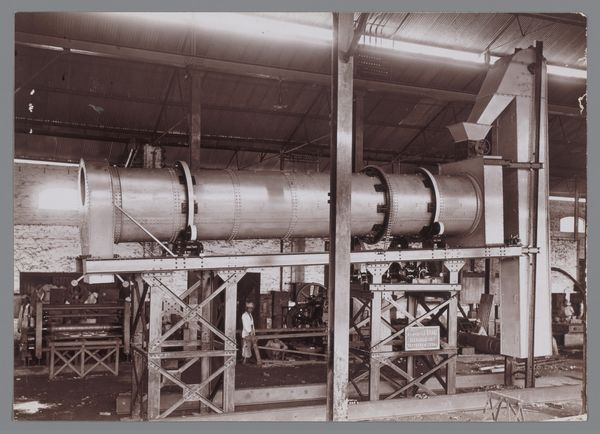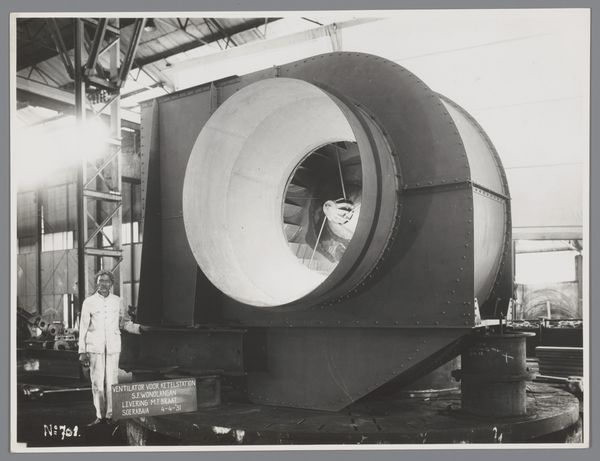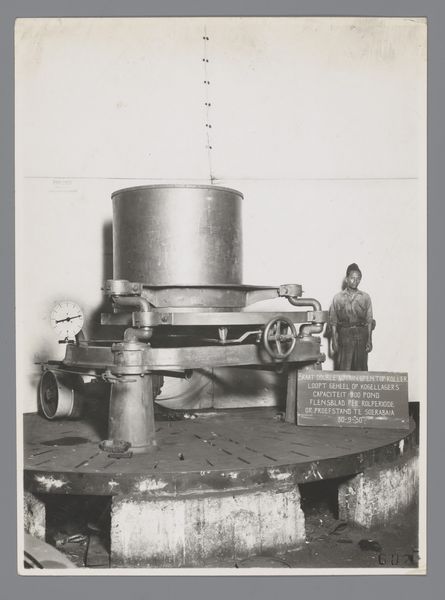
metal, photography
#
precisionism
#
still-life-photography
#
metal
#
sculpture
#
black and white format
#
photography
#
black and white
#
monochrome photography
#
monochrome
#
monochrome
Dimensions: overall: 24 x 18.9 cm (9 7/16 x 7 7/16 in.)
Copyright: National Gallery of Art: CC0 1.0
Editor: Here we have Paul Strand’s "Lathe, Akeley Camera Shop, New York" from 1923, a black and white photograph rendering industrial forms in striking detail. The geometric precision is impressive, almost intimidating. How do you interpret this work? Curator: I see a powerful commentary on the machine age and its intersection with early 20th-century social dynamics. Consider the historical context: post-World War I, industrialization was booming, but so was labor exploitation. Strand's sharp focus aesthetic elevates the machine to a central figure, yet the absence of human workers raises questions about the human cost of progress. Does it speak to you about class divisions, perhaps? Editor: It’s interesting that you frame it in terms of social commentary, I was more focused on formal elements and aesthetic. The interplay of light and shadow, the sharp lines, the texture of the metal... Curator: But aren't those formal elements inherently tied to their historical moment? Precisionism, the movement Strand was associated with here, celebrated industrial landscapes but also reflected anxieties about modernity and the changing roles of individuals within a rapidly mechanizing society. It wasn't simply about celebrating industry; it was about critically examining its impact on human lives. Editor: So you are saying that the lack of the worker speaks to their devalued existence? It challenges the typical heroic view of labor found in, say, social realism? Curator: Exactly. Consider who benefits from this mechanized progress, and at whose expense. Where are the narratives of those displaced or dehumanized by these very machines? I think it makes us question the narratives surrounding technological advancements. Editor: That provides a totally new dimension to my perception! It is not merely about forms and material but it prompts me to think about the broader, often obscured, human narratives intertwined with industrial advancement. Thank you! Curator: And thank you, this constant questioning is what art history is all about.
Comments
No comments
Be the first to comment and join the conversation on the ultimate creative platform.
